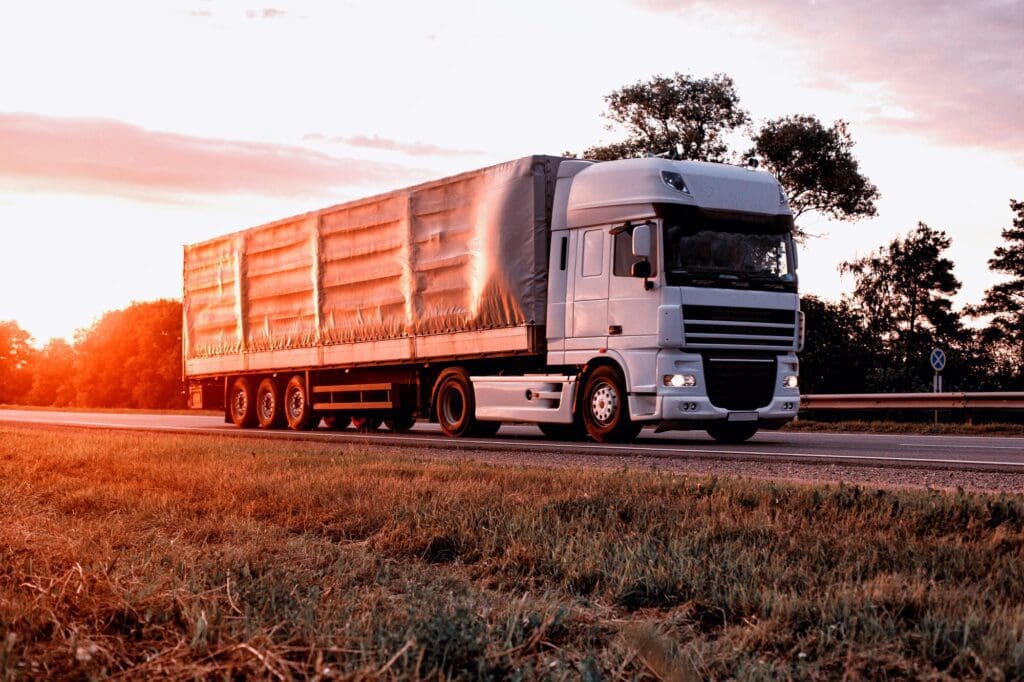Tomatoes wait for no man. Neither do lambs, bees, or hay. The Federal Motor Carrier Safety Administration (FMCSA) understands that timing is everything on farms and ranches, and so instituted several exemptions for trucks hauling agricultural products. And with the recent Electronic Logging Device (ELD) mandate, the Administration felt the need to clarify the 150 air-mile exemption from the Hours of Service (HOS) rules for transporting agricultural commodities.
The basic exemption (as defined by 49 CFR 395.1(k)) “provides exceptions from the HOS rules, during planting and harvesting periods as determined by the State, for the transportation of agricultural commodities (including livestock, bees, and other commodities) within a 150-air-mile radius from the source of the commodities. The same provision applies to the delivery of supplies and equipment for agricultural use from a wholesale or retail distribution point.”
ELDs and the HOS Exemption
The recent ELD rule requires electronic logging devices in most large trucks (more about that later) to track hours of service. As you can imagine, there’s been some confusion about how ELDs fit into the 150 air-mile Hours of Service exemption. The new guidance clarifies that agricultural commodity drivers do not need to log into their ELDs when traveling within the exempted radius. “Any of the time that takes place working within that 150-[air]-mile radius is not counted toward the driver’s hours of service,” said Joe DeLorenzo, director of FMCSA’s Office of Compliance and Enforcement during a call with media. “That includes empty miles driven to a pick-up point, it includes loading time, and it includes the time driving with an agricultural commodity within a 150-[air]-mile radius of the source.” Return trips to the source are also covered under the exemption.
The new FMCSA guidance offers three options for drivers who typically use ELDs:
Option 1 – A driver can log into the ELD once he reaches the 150 air-mile radius limit. The ELD will report any driving time within the 150 air-mile radius as “unidentified driving” time. The driver should reject the unidentified driving time, and the motor carrier must note that the unidentified driving time occurred under the exemption.
Option 2 – A driver can log into the ELD as soon as he comes on duty, noting that any mileage driven within the 150 air-mile radius is under the exemption.
Option 3 – While driving within the 150 air-mile radius, the driver can report the time as authorized personal use, noting on the ELD that the miles are exempt under the agriculture exemption. The miles become “on duty driving” as soon as he exits the exempted area.
The guidance also noted that the driver is subject to the hours of service regulation while driving outside the radius, but can take himself off the HOS clock as soon as he returns. In other words, a driver operating under the exemption only has to log the hours driven outside the radius.
The Radius and Source
That radius is calculated as 150 air-miles—or 172.5 land miles—from the source, which is the pickup point for the commodity. “While a ‘source’ could be strictly interpreted as a farm or a ranch, it also could be a place where agricultural commodities are aggregated and loaded such as a sale barn or a grain elevator or some other intermediate loading and storage facility where that agricultural product is then loaded onto a truck and transported,” DeLorenzo said.
But no matter how many pickup points a farm or ranch may have, the first loading point is the only “source” from which the radius is calculated. When questioned about multiple loading points, DeLorenzo said, “Point A is the source; you go there. If you travel to other [loading] points, as long as you’re within 150 air-miles of the original source, that time doesn’t count.”
More Exemptions
If drivers fall under other agricultural exemptions, they may not have to use ELDs at all.
- Drivers who transport agricultural commodities and do not operate outside of the 150 air-mile radius for more than eight days during any 30-day period can use paper logs instead of ELDs. That’s any 30-day period—the time is not measured month by month.
- Drivers of vehicles manufactured before model year 2000 can also use paper logs.
The two exemptions above cover ELD-use only. Drivers are still subject to the Hours of Service rules—unless they’re driving covered farm vehicles. Those operating farm-specific vehicles are exempted from the HOS rules (and their vehicles are not required to have ELDs, obviously). The FMSCA defines a “covered farm vehicle (CFV)” as one that:
- Travels in the State in which the vehicle is registered or in another State,
- Is operated by an owner or operator of a farm or ranch, or by a family member or employee of the owner or operator
- Transports agricultural commodities, livestock, machinery or supplies to or from a farm or ranch
- Has a license plate or some other means specified by the State that identifies it as a farm vehicle
- Is not used in for-hire motor carrier operations (but for-hire operations do not include use of a vehicle owned and operated by a tenant farmer to transport the landlord’s portion of the crops under a crop-share agreement)
- Is not transporting hazardous materials that require placarding, and either of the following:
- Has a GVW or GVWR (whichever is greater) of 26,001 or less, in which case the CFV exemptions in § 390.39 apply anywhere in the United States
- Has a GVW or GVWR (whichever is greater) of more than 26,001 pounds and travels within the State where it is registered or, if traveling out of the State where it is registered, stays within a 150 air miles of the owner or operator’s farm or ranch
A Simple Shipping Solution
Sound complicated? It doesn’t have to be, especially when you leave the shipping to us. As experienced freight brokers, we understand the various rules and exemptions and stay updated as to any changes. At Next Exit Logistics, we earn the trust of our clients with efficiency, transparency, and security. In addition, we understand how to handle freight services for unusual, oversize, or overweight shipments and are certified to arrange the shipment of hazardous materials. To learn more about our services, call Next Exit Logistics at 866-624-2661 or contact us via email.




